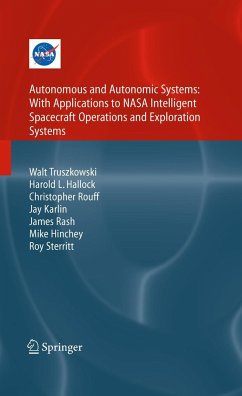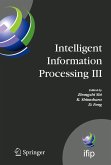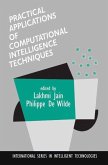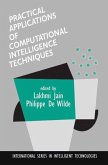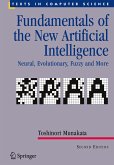This book provides an in-depth discussion of autonomous and autonomic systems, their interdependencies, differences and similarities. Current and pending issues in these evermore increasingly important subjects are highlighted and discussed. Concepts, ideas and experiences are explored in relation to real-life NASA systems in spacecraft control and in the exploration domain.
In the early 1990s, NASA Goddard Space Flight Center started researching and developing autonomous and autonomic ground and spacecraft control systems for future NASA missions. This research started by experimenting with and developing expert systems to automate ground station software and reduce the number of people needed to control a spacecraft. This was followed by research into agent-based technology to develop autonomous ground c- trol and spacecraft. Research into this area has now evolved into using the concepts of autonomic systems to make future space missions self-managing and giving them a high degree of survivability in the harsh environments in which they operate. This book describes much of the results of this research. In addition, it aimstodiscusstheneededsoftwaretomakefutureNASAspacemissionsmore completelyautonomousandautonomic.Thecoreofthesoftwareforthesenew missions has been written for other applications or is being applied gradually in current missions, or is in current development. It is intended that this book should document how NASA missions are becoming more autonomous and autonomic and should point to the way of making future missions highly - tonomous and autonomic. What is not covered is the supporting hardware of these missions or the intricate software that implements orbit and at- tude determination, on-board resource allocation, or planning and scheduling (though we refer to these technologies and give references for the interested reader).
In the early 1990s, NASA Goddard Space Flight Center started researching and developing autonomous and autonomic ground and spacecraft control systems for future NASA missions. This research started by experimenting with and developing expert systems to automate ground station software and reduce the number of people needed to control a spacecraft. This was followed by research into agent-based technology to develop autonomous ground c- trol and spacecraft. Research into this area has now evolved into using the concepts of autonomic systems to make future space missions self-managing and giving them a high degree of survivability in the harsh environments in which they operate. This book describes much of the results of this research. In addition, it aimstodiscusstheneededsoftwaretomakefutureNASAspacemissionsmore completelyautonomousandautonomic.Thecoreofthesoftwareforthesenew missions has been written for other applications or is being applied gradually in current missions, or is in current development. It is intended that this book should document how NASA missions are becoming more autonomous and autonomic and should point to the way of making future missions highly - tonomous and autonomic. What is not covered is the supporting hardware of these missions or the intricate software that implements orbit and at- tude determination, on-board resource allocation, or planning and scheduling (though we refer to these technologies and give references for the interested reader).
From the reviews:
"Truszkowski (NASA Goddard Space Flight Center) and colleagues have documented how NASA missions have become and will become more autonomous and automatic. ... The authors present several top-level examples along with ... helpful flowcharts. ... A thorough glossary and nearly 200 references provide a good basis for diving into more depth with other resources. This book would be a start for someone who is developing autonomous and automatic systems. ... Summing Up: Recommended. Professional audiences." (D. B. Spencer, Choice, Vol. 47 (11), July, 2010)
"Truszkowski (NASA Goddard Space Flight Center) and colleagues have documented how NASA missions have become and will become more autonomous and automatic. ... The authors present several top-level examples along with ... helpful flowcharts. ... A thorough glossary and nearly 200 references provide a good basis for diving into more depth with other resources. This book would be a start for someone who is developing autonomous and automatic systems. ... Summing Up: Recommended. Professional audiences." (D. B. Spencer, Choice, Vol. 47 (11), July, 2010)

